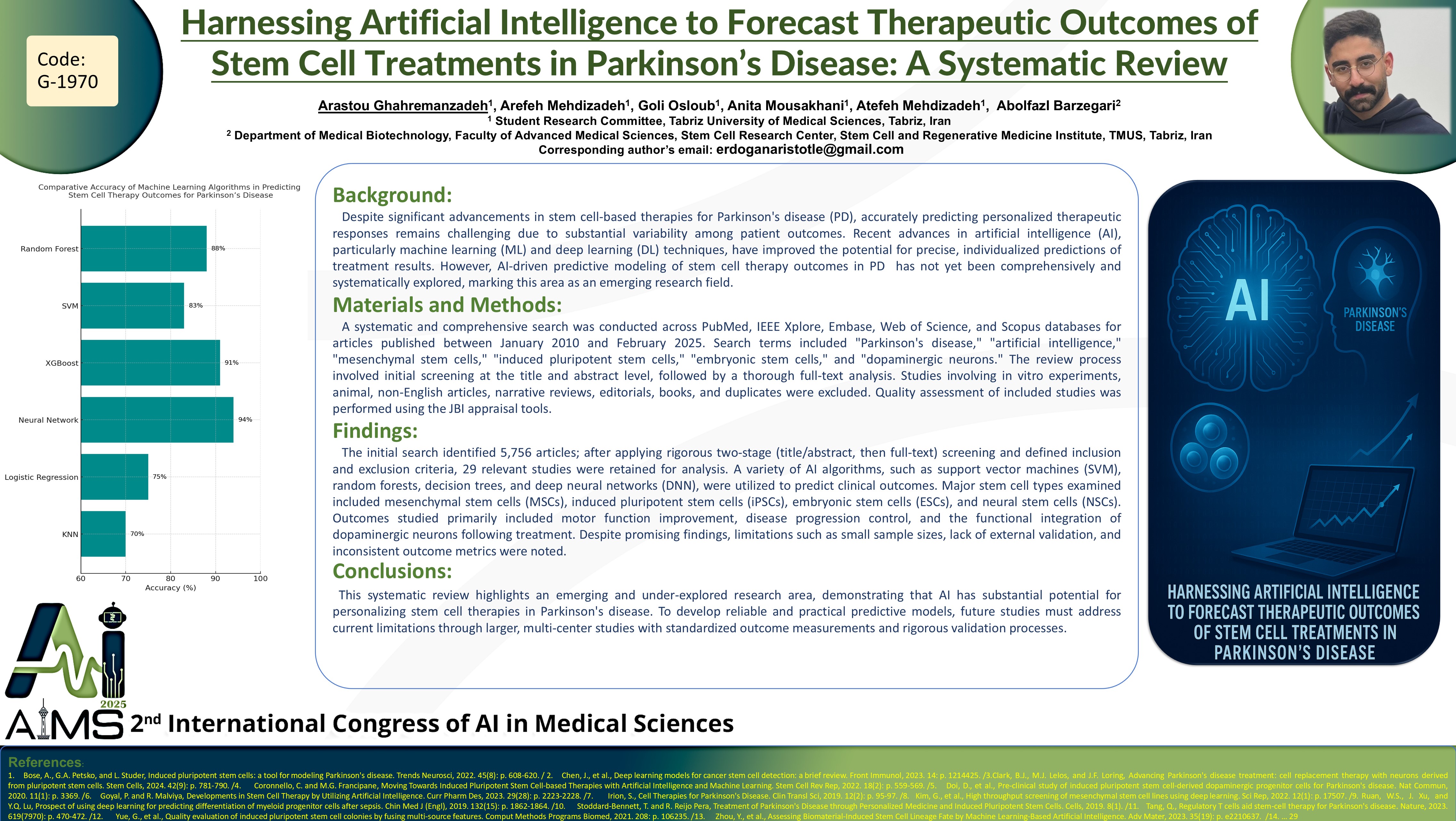استفاده از هوش مصنوعی برای پیش بینی پیامدهای درمانی درمان با سلول های بنیادی در بیماری پارکینسون: یک مرور سیستماتیک
کد: G-1970
نویسندگان: Arastou Ghahremanzadeh * ℗, Arefeh Mehdizadeh, Goli Osloub, Anita Mousakhani, Atefeh Mehdizadeh, Abolfazl Barzegari
زمان بندی: زمان بندی نشده!
برچسب: سیستم های تصمیم یار بالینی
دانلود: دانلود پوستر
خلاصه مقاله:
خلاصه مقاله
Background: Despite significant advancements in stem cell-based therapies for Parkinson's disease, accurately predicting personalized therapeutic responses remains challenging due to substantial variability among patient outcomes. Recent advances in artificial intelligence have improved the potential for precise, individualized predictions of treatment results. However, AI-driven predictive modeling of stem cell therapy outcomes in PD has not yet been comprehensively and systematically explored, marking this area as an emerging research field. Methods: A systematic and comprehensive search was conducted across PubMed, IEEE Xplore, Embase, Web of Science, and Scopus databases for articles published between January 2010 and February 2025. Search terms included "Parkinson's disease," "artificial intelligence," "machine learning," "deep learning," "mesenchymal stem cells," "induced pluripotent stem cells," "embryonic stem cells," and "dopaminergic neurons." The review process involved initial screening at the title and abstract level, followed by a thorough full-text analysis. Studies involving in vitro experiments, animal models, non-English articles, narrative reviews, editorials, books, and duplicates were excluded. Quality assessment of included studies was performed using the Joanna Briggs Institute appraisal tools. Findings: The initial search identified 5,756 articles; after applying rigorous two-stage (title/abstract, then full-text) screening and defined inclusion and exclusion criteria, 29 relevant studies were retained for analysis. A variety of AI algorithms, such as support vector machines , random forests, decision trees, and deep neural networks, were utilized to predict clinical outcomes. Major stem cell types examined included mesenchymal stem cells, induced pluripotent stem cells, embryonic stem cells, and neural stem cells. Outcomes studied primarily included motor function improvement, disease progression control, and the functional integration of neurons following treatment. Despite promising findings, limitations such as small sample sizes, lack of external validation, and inconsistent outcome metrics were noted. Conclusion: This systematic review highlights an emerging and under-explored research area, demonstrating that AI has substantial potential for personalizing stem cell therapies in Parkinson's disease. To develop reliable and practical predictive models, future studies must address current limitations through larger, multi-center studies with standardized outcome measurements and rigorous validation processes.
کلمات کلیدی
Parkinson'sdisease,Machinelearning,Stemcell therapy,Dopaminergic neurons,Treatmentoutcomeprediction,personalizedmedicine
